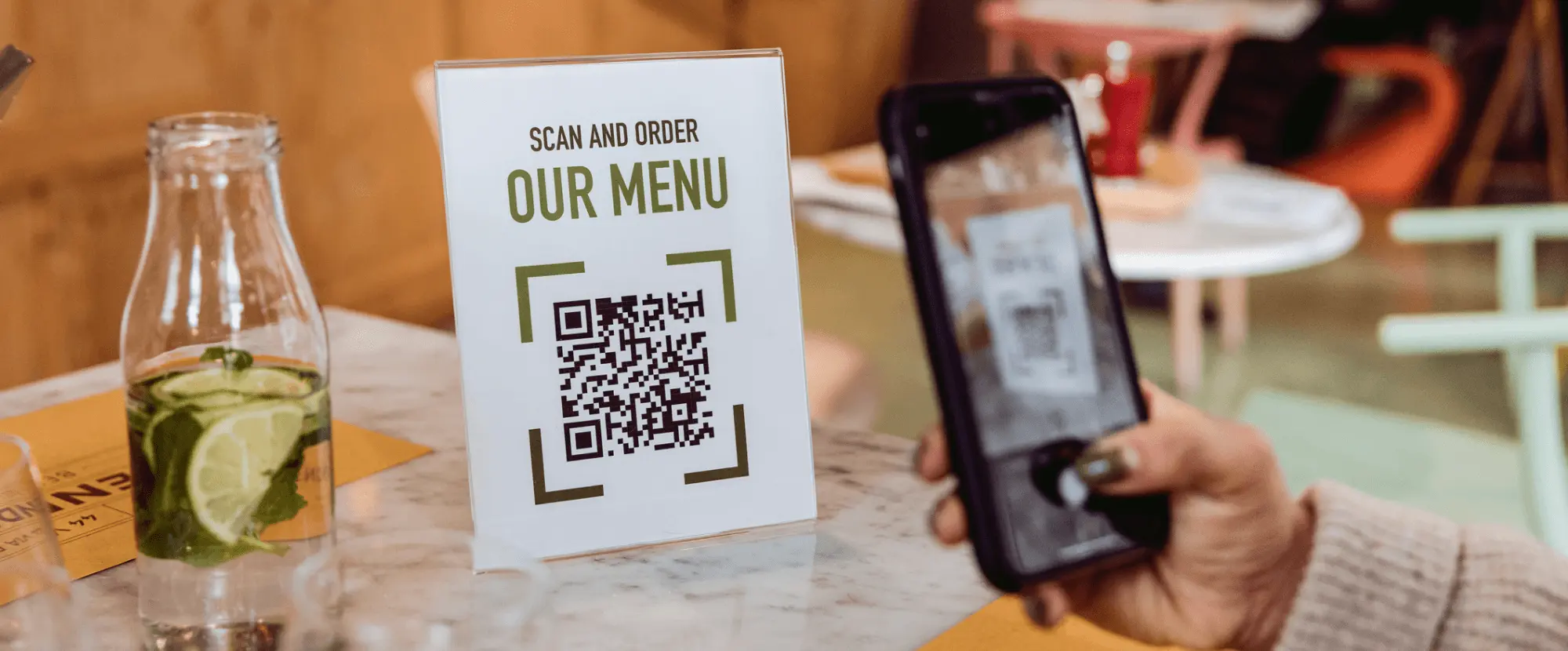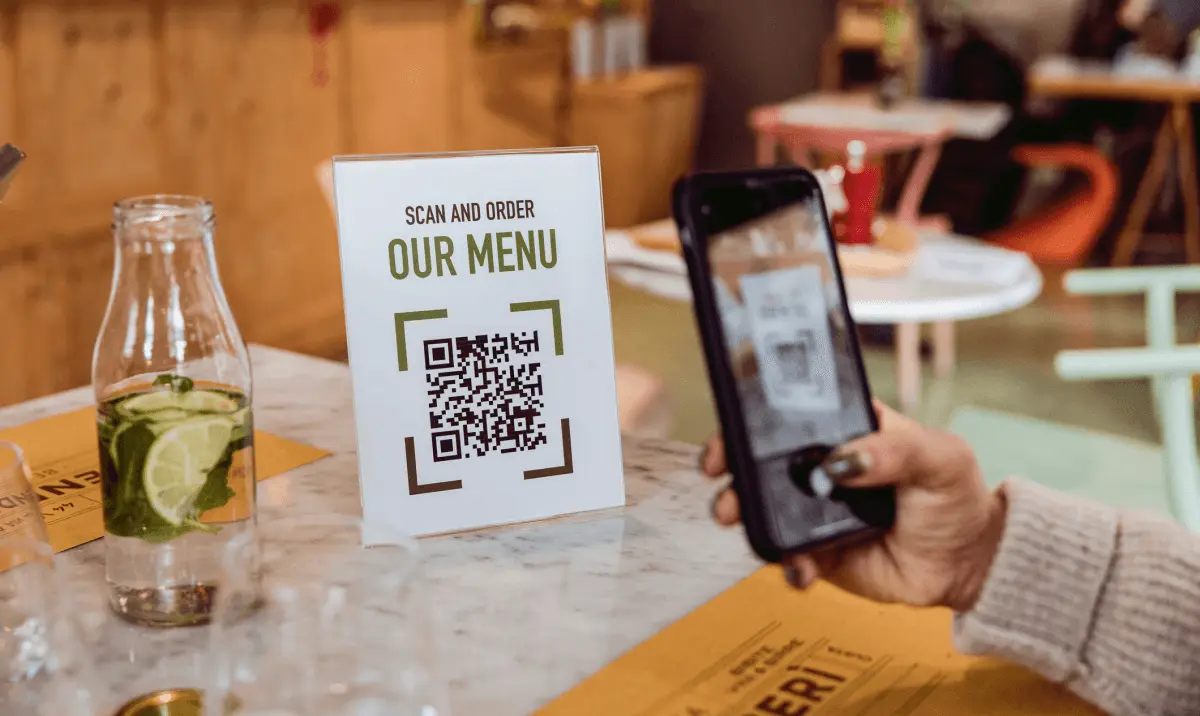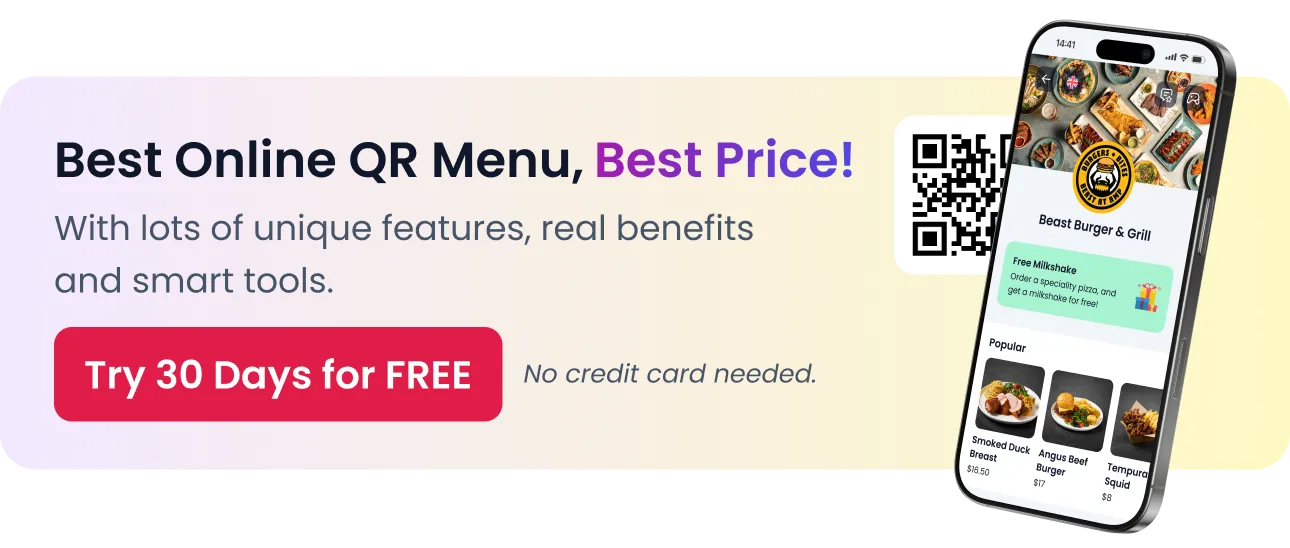

Reinvent the Customer Journey in Your Restaurant with QR Codes
The dining experience has evolved dramatically in recent years, with QR codes becoming a staple in modern restaurant operations. For both customers and restaurant owners, QR codes offer a convenient, fast, and contactless way to interact with services, bringing efficiency to every stage of the customer journey. These scannable codes are redefining how guests view menus, place orders, and even settle their bills, helping streamline operations and improve the overall guest experience.
Implementing QR codes isn’t just about keeping up with technology; it’s a strategic choice that enhances customer satisfaction, speeds up service, and adds a touch of personalization to each interaction. Whether it’s a quick lunch or a fine dining evening, QR codes make it possible for diners to seamlessly navigate their meal experience, creating a more relaxed and engaging environment.
In this article, we’ll explore how QR codes can transform key aspects of your restaurant’s operations, from the moment customers step in to when they leave feedback or sign up for your loyalty program. Dive into this guide to discover practical ways to leverage QR technology to improve service efficiency, boost customer engagement, and make your restaurant the destination of choice.
Why QR Codes Are Essential in Modern Restaurants?
In today’s fast-paced restaurant environment, QR codes have become indispensable tools for enhancing the dining experience. These small, scannable codes serve as entry points for digital interaction, allowing restaurants to offer more efficient, convenient, and personalized service. Here’s a closer look at why QR codes are essential for the modern restaurant industry and how they contribute to a superior customer journey.
Understanding QR Codes in the Dining Experience
QR codes provide guests with easy access to digital resources through a quick scan on their smartphone. From accessing menus to placing orders and making payments, QR codes streamline every part of the dining experience.
- What QR Codes Enable:
- Instant access to up-to-date digital menus
- Contactless ordering and payment options
- Convenient ways to participate in loyalty programs and leave feedback
By integrating QR codes, restaurants can simplify and elevate their services, making each visit smoother and more enjoyable for customers.
Key Benefits of QR Codes for Restaurants
Integrating QR codes offers a variety of benefits that help restaurants improve operations and enhance the customer experience.
- Operational Efficiency: QR codes reduce the need for physical menus, paper bills, and other materials that require maintenance and frequent updating.
- Reduced Wait Times: Guests can scan, view the menu, and place orders without waiting for a server, speeding up service and improving table turnover.
- Enhanced Customer Experience: QR codes provide a more engaging, interactive experience, with direct access to everything from the menu to reviews, increasing customer satisfaction.
With these benefits, QR codes are essential tools for any restaurant looking to operate efficiently and meet modern customer expectations.
How QR Codes Can Elevate the Customer Journey?
QR codes can improve the customer journey at every touchpoint, from the moment they enter to their final steps out the door.
- Seamless Entry-to-Exit Experience: QR codes provide a unified experience, allowing customers to interact with the restaurant digitally throughout their visit.
- Real-Time Access: Menus, ordering, and payments can all be managed instantly, enhancing both convenience and engagement.
- Personalization Opportunities: By analyzing QR code data, restaurants can tailor experiences and recommendations based on customer preferences.
By implementing QR codes, restaurants can provide a smoother, more personalized customer journey that encourages repeat visits and builds brand loyalty.
Transform Your Menu with QR Codes
Transitioning to a QR code-enabled menu is a game-changer for restaurants looking to modernize and simplify the dining experience. Digital menus offer a dynamic and flexible way to present your offerings, while QR codes make them instantly accessible, hygienic, and easy to update. Here’s how using QR codes for your menu can bring significant benefits and make your restaurant stand out.
Why Digital Menus Outperform Paper Menus?
Switching to digital menus accessible through QR codes provides several advantages over traditional paper menus, particularly in a fast-evolving dining landscape.
- Health and Hygiene Benefits: Digital menus reduce the need for physical handling, making them a safer option for both customers and staff.
- Instant Updates: Easily change prices, add seasonal items, and update menu descriptions without the need for reprinting.
- Cost Savings: Reduces costs on printing and maintenance of physical menus, especially for restaurants with frequent menu changes.
Digital menus offer a more sustainable and flexible option that aligns with modern restaurant standards, meeting customer demands for both safety and convenience.
How to Create a QR Code-Enabled Digital Menu
Implementing a QR code menu involves a few simple steps but requires the right digital tools to ensure a seamless experience.
- Choose a Reliable Digital Menu Provider: Select a provider that offers customization, ease of use, and security. Look for platforms that support integrations with dietary badges and allergen notifications.
- Generate QR Codes for Menu Access: Once your menu is digital, use a QR code generator to create codes that link directly to the menu. Test the QR codes to ensure they work on various mobile devices.
- Distribute QR Codes Strategically: Place QR codes in visible locations like tables, waiting areas, and even on table tents or menu boards.
Creating a QR code-enabled menu ensures that your customers can access the most up-to-date information and enjoy a streamlined ordering experience.
Best Practices for Designing QR Code Menus
Designing a QR code menu involves more than just digitizing the menu itself; it’s about making it easy for customers to navigate and understand.
- Organize for Clarity: Arrange menu sections (appetizers, mains, desserts) in a logical flow to guide the customer experience.
- Use Dietary Badges and Allergen Information: Clearly mark items with dietary badges (such as vegan, gluten-free) and allergens to enhance transparency and meet customer needs. Providers like Menuviel offer pre-made dietary and allergen badges for easy assignment.
- Highlight Specials and Upsells: Showcase featured items, seasonal dishes, or popular choices to encourage orders and increase sales.
Following these design best practices ensures that your QR code menu is not only functional but also optimized to boost customer engagement and satisfaction.
Enable Seamless Ordering and Payments
Implementing QR codes for ordering and payment processes can transform how customers interact with your restaurant. By allowing guests to order and pay directly from their devices, you create a fast, efficient, and contactless experience that reduces wait times, minimizes errors, and enhances customer satisfaction. Here’s how to optimize QR codes for a seamless ordering and payment journey in your restaurant.
How QR Codes Simplify the Ordering Process?
QR codes simplify ordering by allowing customers to browse the menu, select items, and place their orders directly from their smartphones.
- Self-Service Ordering: Guests can place orders at their own pace, without waiting for a server, leading to quicker turnaround times and a more relaxed experience.
- Reduced Errors: Orders are entered directly by customers, minimizing the risk of miscommunication and ensuring accuracy.
- Upselling Opportunities: Digital menus can suggest add-ons or popular items, subtly guiding customers to increase their order size.
By integrating QR codes for ordering, restaurants can enhance efficiency and offer customers a more personalized dining experience.
Streamlining Payment with QR Codes
QR codes offer a convenient, contactless payment solution that eliminates the need for handling cash or credit cards.
- Multiple Payment Options: Many QR code systems support various payment methods, such as credit cards, mobile wallets, and digital payments, giving customers flexibility.
- Faster Payment Process: Guests can pay at their convenience without waiting for the bill, speeding up table turnover and improving service flow.
- Enhanced Security: QR code payments are encrypted and secure, giving customers peace of mind during transactions.
With QR code payments, you simplify the checkout process, reduce wait times, and create a safer, more streamlined experience for customers.
QR Codes for Split Bills and Group Payments
Handling group dining experiences is easier with QR codes, as they facilitate seamless split bills and group payments.
- Individual Payments: Customers can scan the QR code and pay only for their items, making it simple to handle group dinners without complex calculations.
- Split Payment Options: QR codes allow diners to split the bill evenly or allocate specific items to individual payers, accommodating various preferences.
- Enhanced Group Experience: By making it easy for groups to settle bills, you create a more positive experience, especially for large parties or events.
QR codes for split bills and group payments enhance convenience, encouraging guests to choose your restaurant for group outings and special occasions.
Elevate Customer Engagement Using QR Codes
QR codes are more than just a tool for ordering and payments—they can also play a vital role in increasing customer engagement. From loyalty programs to feedback collection and social media connections, QR codes allow restaurants to create a more interactive and engaging experience that keeps customers coming back. Here’s how you can leverage QR codes to build meaningful connections with your guests.
Leveraging QR Codes for Loyalty Programs
QR codes simplify loyalty program enrollment and encourage repeat business by making it easy for customers to sign up and participate.
- Seamless Sign-Ups: Guests can scan a QR code to instantly join your loyalty program, eliminating the need for paperwork or complex processes.
- Reward Redemption: QR codes allow customers to easily access their rewards or points balance, keeping them engaged and motivated to return.
- Promotions and Exclusive Offers: Use QR codes to promote special deals, exclusive events, or birthday discounts to loyalty members.
Implementing QR codes for loyalty programs enhances customer retention, allowing you to build a loyal customer base effortlessly.
Collecting Real-Time Feedback with QR Codes
Customer feedback is crucial for continuous improvement, and QR codes provide a quick, efficient way to gather real-time insights.
- Easy Access to Feedback Forms: Place QR codes on tables or receipts that link to a quick feedback survey, making it convenient for customers to share their thoughts.
- Timely Follow-Ups: QR feedback forms can be tailored to specific parts of the experience (e.g., service, food quality), allowing you to gather actionable insights.
- Improved Customer Retention: Addressing feedback promptly shows customers that you value their opinions, fostering loyalty and repeat visits.
With QR codes for feedback, you can gain immediate insights into the customer experience, helping you fine-tune your service and build a positive reputation.
Boosting Social Media Engagement through QR Codes
QR codes provide an effortless way to connect with customers on social media, encouraging them to engage with your brand even after they leave the restaurant.
- Social Media Links: QR codes can link directly to your social media profiles, encouraging customers to follow or engage with your content.
- User-Generated Content: Encourage guests to share their dining experience on social media by placing QR codes that link to branded hashtags or photo challenges.
- Event and Promotion Updates: Use QR codes to promote upcoming events, seasonal offers, or limited-time deals on your social platforms.
By incorporating QR codes for social engagement, you expand your brand’s reach and create a community of loyal customers eager to stay connected.
Enhance Safety and Hygiene with QR Codes
In today’s health-conscious environment, maintaining high standards of safety and hygiene is essential. QR codes offer a way to minimize physical contact, ensuring a safer experience for both customers and staff. By adopting QR codes, restaurants can promote a contactless environment, communicate health guidelines effectively, and provide essential information about allergens and dietary restrictions—all while enhancing the customer experience.
Contactless Ordering and Payments for a Safer Experience
QR codes enable contactless ordering and payment, reducing the need for physical interactions and creating a safer dining environment.
- Minimized Physical Contact: QR code-based ordering and payments allow customers to interact with the menu and pay without touching shared items like menus or credit card machines.
- Reduced Staff Contact: Staff can focus on delivering food rather than handling transactions or menus, minimizing close interactions and keeping the experience safer for everyone.
- Enhanced Customer Confidence: Offering a contactless experience helps reassure customers who may be concerned about health and hygiene, encouraging them to dine in.
Contactless ordering and payment through QR codes allow restaurants to meet safety expectations, making customers feel more comfortable and cared for.
QR Codes for Digital Health and Safety Policies
Use QR codes to keep guests informed about your restaurant’s health and safety measures, fostering transparency and trust.
- Easy Access to Safety Information: QR codes can link directly to updated information on your health and sanitation practices, keeping customers informed on your efforts to maintain a safe environment.
- Allergen and Dietary Information: Display important allergen and dietary information on digital menus accessible via QR codes, ensuring that customers with specific dietary needs can dine safely.
- Customer Peace of Mind: By providing quick access to health and safety details, customers can feel reassured that you’re prioritizing their well-being.
Through QR codes, restaurants can share important safety and allergen information seamlessly, reinforcing trust and ensuring a safe dining experience.
How to Optimize QR Codes for SEO and Analytics?
Optimizing QR codes for SEO and analytics allows restaurants to reach a broader audience and gather valuable insights into customer behavior. By strategically linking QR codes to optimized web pages and tracking user interactions, you can improve visibility, understand customer preferences, and enhance the dining experience. Here’s how to make the most out of your QR codes for SEO and analytics.
QR Code Optimization for Search Engines
Using QR codes as a gateway to SEO-friendly pages helps increase your restaurant’s online presence, making it easier for potential customers to discover you.
- Link to SEO-Optimized Pages: Ensure QR codes direct customers to web pages that are optimized with relevant keywords, helping improve your site’s ranking.
- Mobile Optimization: Since QR codes are accessed primarily via mobile devices, make sure your website is mobile-friendly and loads quickly to keep users engaged.
- Local SEO Focus: QR codes leading to location-specific pages (e.g., menu, reservation, or contact pages) can help boost local SEO, attracting nearby diners searching for restaurants like yours.
Optimizing QR-linked pages for search engines enhances visibility, ensuring that your restaurant appears in relevant search results.
Using Analytics to Improve Customer Journey
Tracking how customers interact with QR codes provides essential insights into their preferences, helping you tailor the dining experience to meet their needs.
- Click-Through Data: Monitor how often each QR code is scanned and which pages receive the most traffic to understand customer interests and behaviors.
- Behavioral Insights: Analytics can reveal which menu items are frequently viewed, guiding menu optimization and helping identify popular items or areas for improvement.
- Real-Time Adjustments: Use real-time data to make quick adjustments to your digital offerings, whether it’s updating a popular item’s availability or changing featured menu sections based on demand.
With QR code analytics, restaurants gain valuable insights into customer behavior, enabling data-driven decisions that enhance the overall experience.
A/B Testing QR Code Placements and Designs
Testing different placements and designs for QR codes allows you to discover what works best for your audience, maximizing engagement and usability.
- Testing Placement: Experiment with QR code placements on tables, menus, or signage to determine which locations generate the highest engagement.
- Design Variations: Use contrasting colors, clear instructions, and recognizable icons to make QR codes easy to find and scan. Testing designs can help identify what resonates best with your customers.
- Analyze Engagement Rates: Compare scan rates between different designs and placements to determine which setup yields the best results, refining your approach over time.
A/B testing your QR code placements and designs helps identify the most effective strategies for maximizing customer engagement and interaction.
Common Challenges and How to Overcome Them
While QR codes offer many benefits, implementing them effectively in a restaurant setting can present certain challenges. From technical difficulties to customer education, addressing these hurdles is essential to ensure a smooth, positive experience for both guests and staff. Here’s how to overcome the common obstacles associated with QR code usage in restaurants.
Addressing Technical Issues with QR Code Systems
Technical glitches can disrupt the QR code experience, leading to frustration for customers and staff alike. Ensuring a seamless technical setup is key to making QR codes work effectively.
- Ensure Code Compatibility: Use high-quality QR codes that are compatible with various smartphone operating systems to avoid scanning issues.
- Regular Testing: Periodically test QR codes on different devices to catch any issues early and make necessary adjustments.
- Reliable Internet Connection: Make sure your restaurant has a stable Wi-Fi connection, especially if guests need it to access online menus or payment systems via QR codes.
By addressing technical issues proactively, you can prevent disruptions and provide a reliable QR code experience for all customers.
Educating Customers and Staff on QR Code Use
Not all customers or staff members may be familiar with QR code technology. Educating them on its benefits and how to use it is essential for a smooth transition.
- Clear Instructions: Provide simple instructions alongside QR codes, guiding customers on how to scan and access the services.
- Staff Training: Ensure staff members are knowledgeable about QR codes so they can assist customers if needed, making them feel comfortable with the process.
- Patience with New Users: Recognize that some customers may be hesitant or unfamiliar with digital ordering, so offering optional guidance can help ease them into the experience.
Educating both customers and staff on QR code functionality enhances their comfort level, leading to higher adoption and satisfaction rates.
Balancing Digital and Traditional Customer Preferences
While QR codes offer convenience, some customers may still prefer traditional menus and payment methods. Offering both options can help meet diverse preferences.
- Hybrid Approach: Provide physical menus and the option to order traditionally for customers who may not be comfortable using QR codes.
- Printed QR Code Menus: For guests who want a digital experience but prefer something tangible, consider placing QR codes on printed menus or table cards.
- Continuous Feedback: Gather customer feedback on the QR code experience to understand preferences and adjust accordingly.
Balancing digital and traditional options ensures that all customers, regardless of preference or tech-savviness, feel welcomed and valued.
Implementing QR Codes in Your Restaurant: A Step-by-Step Guide
Successfully integrating QR codes in your restaurant requires careful planning and a step-by-step approach. From choosing the right provider to promoting the new features to your customers, each step is crucial to ensure that QR codes enhance, rather than complicate, the dining experience. Here’s a practical guide to help you implement QR codes smoothly and effectively in your restaurant.
Choosing the Right QR Code Generator and Provider
Selecting a reliable QR code provider is essential, as this choice will impact the quality, functionality, and customization of your QR codes.
- Evaluate Features: Look for providers that offer options like tracking, analytics, and customization to match your restaurant’s branding.
- Consider Integrations: Opt for QR code systems that integrate seamlessly with your existing POS, digital menu, and payment platforms.
- Compare Costs: Review pricing structures for each provider, considering your budget and whether they offer a one-time fee or subscription-based pricing.
Choosing the right QR code provider ensures that you have a dependable and adaptable solution that meets your restaurant’s needs.
Designing, Printing, and Placing QR Codes Effectively
Once you’ve created your QR codes, it’s time to design, print, and strategically place them for maximum visibility and ease of use.
- Clear and Recognizable Design: Customize QR codes with your brand colors and logo to make them recognizable and visually appealing.
- High-Quality Printing: Print QR codes on durable materials that can withstand frequent handling and cleaning to ensure longevity.
- Strategic Placement: Place QR codes in high-visibility areas, such as tables, entrances, and counters, where customers can easily find and scan them.
By designing and placing QR codes thoughtfully, you increase the likelihood that customers will engage with them, enhancing their dining experience.
Launching and Promoting Your QR Code Experience
Introduce your QR code features to customers in a way that sparks interest and encourages usage. Proper promotion ensures a successful rollout and maximizes customer adoption.
- Announce the Change: Inform customers of the new QR code options through in-restaurant signage, social media, and email newsletters.
- Highlight Benefits: Emphasize the convenience, safety, and contactless features that QR codes bring, making them attractive to customers.
- Encourage Feedback: Invite customers to share their thoughts on the QR code experience to gauge satisfaction and make any necessary improvements.
Effectively launching and promoting QR code features helps create a positive initial impression, leading to greater acceptance and ongoing engagement from customers.
Key Takeaways
Implementing QR codes in your restaurant can revolutionize the customer journey, streamlining operations and enhancing the overall dining experience. Here are the main points to remember:
- Boost Efficiency: QR codes simplify ordering and payment processes, reducing wait times and allowing staff to focus on delivering exceptional service.
- Increase Engagement: QR codes offer opportunities for loyalty program sign-ups, real-time feedback collection, and social media interaction, keeping customers engaged beyond the meal.
- Improve Safety and Hygiene: Contactless ordering and payments ensure a safer dining environment for customers and staff, addressing health and hygiene concerns.
- Optimize for Success: With the right QR code provider, SEO-friendly links, and data tracking, QR codes can be a powerful tool for improving customer experience and refining your operations.
- Overcome Challenges: Educating customers, addressing technical issues, and balancing digital and traditional preferences ensure a smooth transition to QR code technology.
By integrating QR codes thoughtfully, you can create a more efficient, engaging, and safe experience for your customers, setting your restaurant apart as a modern, customer-centric establishment.
ABOUT THE AUTHOR
Erkin Coban
Your Customers Deserve The Best
And we got Menuviel for them.
The fastest and easy-to-use online QR menu with 12+ unique features. Choose Menuviel and elevate your service quality to the next level.
Use free for the first 30 days.

In This Article

Free AI Tools for Restaurants
TRY NOW ➜

Talk to them in their own language
With Menuviel, cater to an international customer base by adding multiple language options to your menus.





